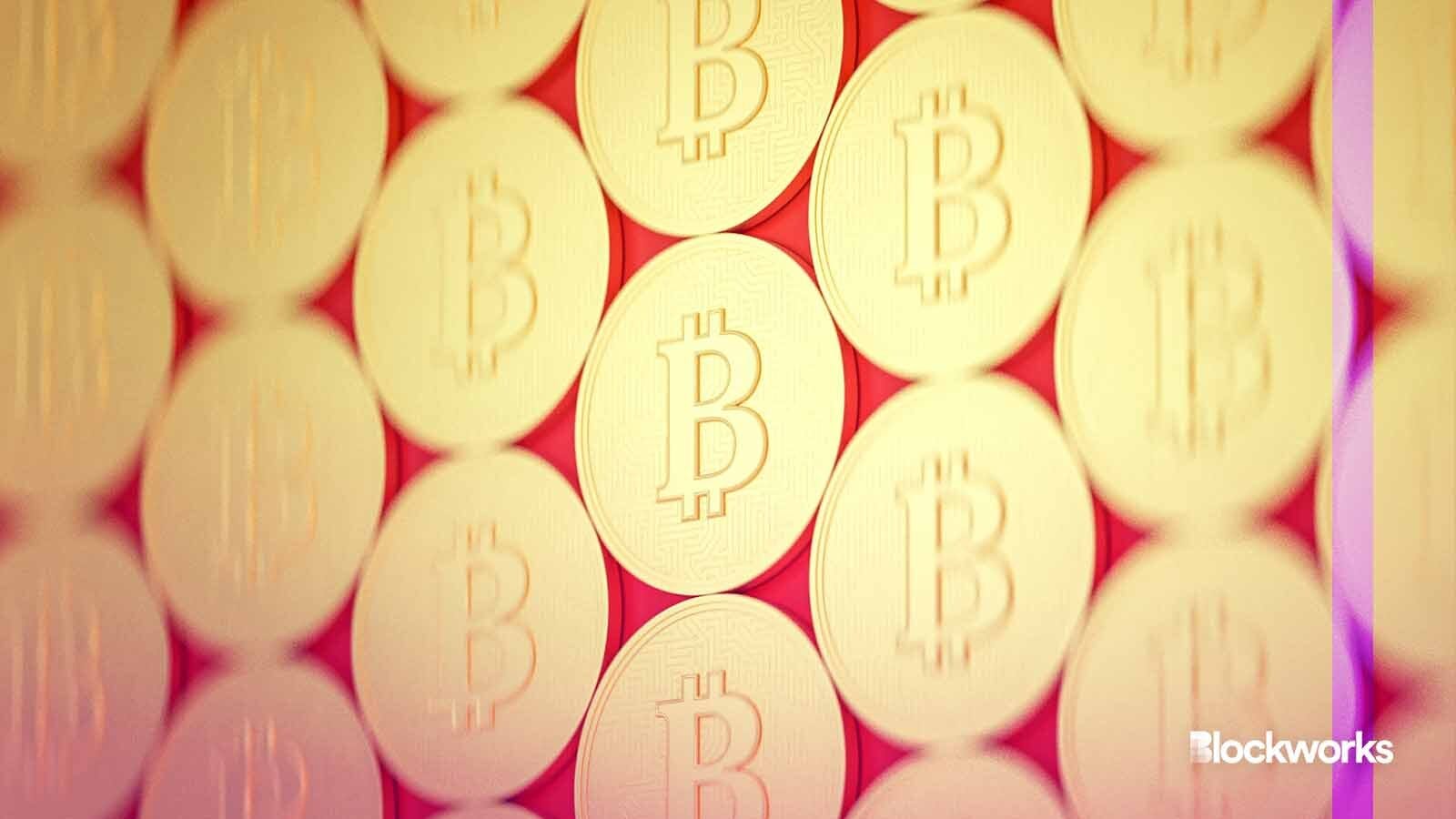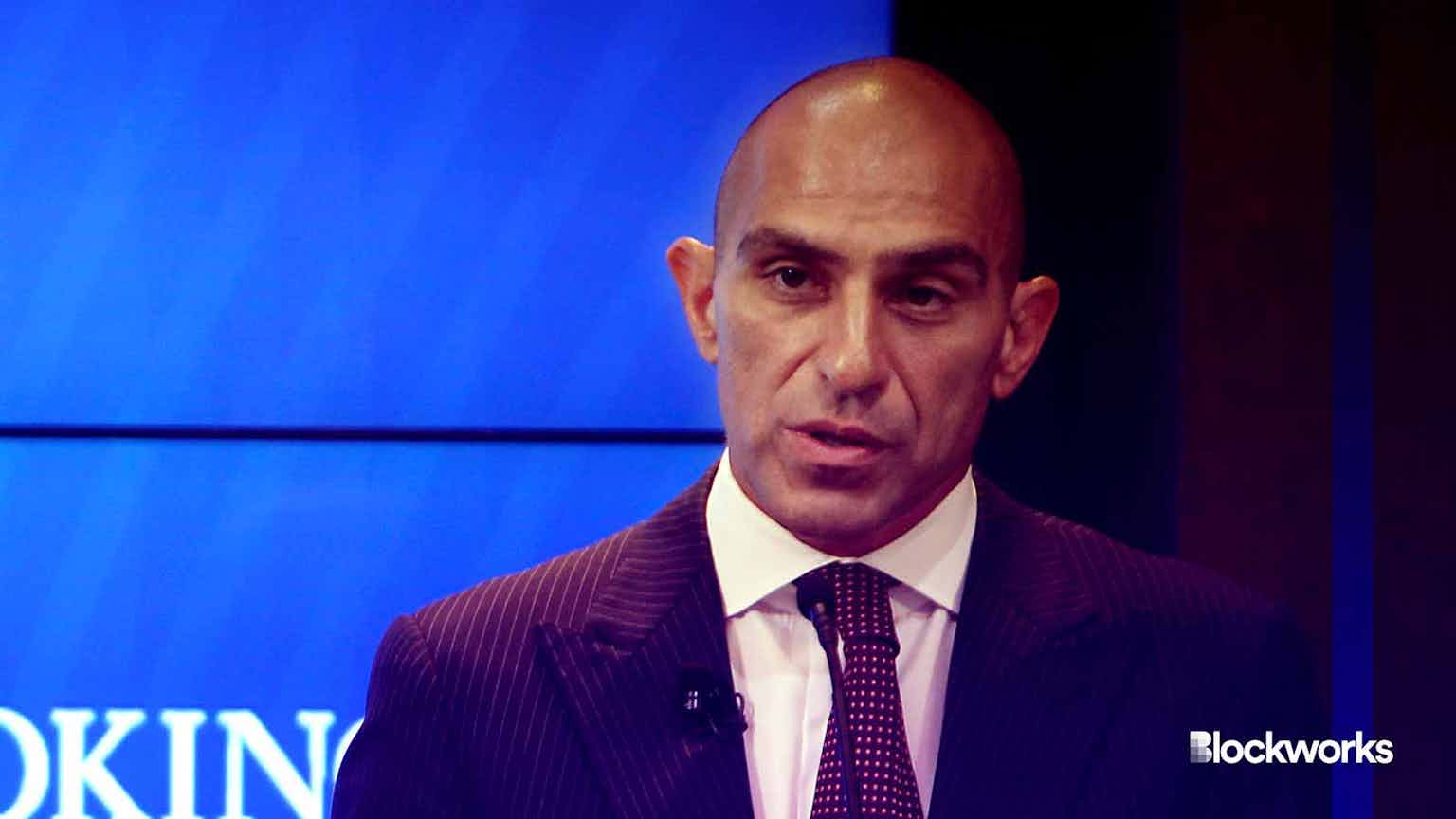Let’s pour one out for the first-day spot bitcoin ETF investors
Bitcoin’s recent dumping only proves that the idea of Wall Street buying bitcoin is more powerful than their actual arrival

愚木混株 cdd20/Unsplash modified by Blockworks
Those who bought shares in spot bitcoin ETFs earlier this month have suffered a frustrating feeling common among crypto investors — as soon as you buy bitcoin, the price goes down.
Reddit thread after Reddit thread details similar experiences. This time around is particularly special, in that BlackRock, Fidelity, VanEck (the very ones some prophesied to bring bitcoin to new heights) and others bought 95,300 BTC ($3.8 billion) in six days and the price of bitcoin still went down nearly 20%.
How much of that bitcoin was acquired through Coinbase spot markets, third party brokers or OTC desks isn’t really known. In any case, bitcoin’s recent dumping only proves that the idea of Wall Street buying bitcoin is more powerful than their actual arrival.
It turns out that some of traditional finance’s biggest operators are still small fish in a big bitcoin pond. So far, all benefit to bitcoin’s price because of the ETFs came well before SEC approval, and any buying pressure associated with the funds has clearly given way to the sellside.
Bitcoin rallied up to 80% — from $27,000 to $49,000 — between BlackRock’s initial ETF filing last June and their launch on Jan. 11, although not in a straight line.
The good vibes associated with BlackRock and all the others buying billions in bitcoin have been sadly dampened by the billions in bitcoin flowing out of Grayscale’s bitcoin trust (GBTC), now a spot ETF.
Spot ETFs buy and hold bitcoin on behalf of shareholders. More net inflows means more bitcoin off the market — reducing the active supply and maybe even boosting prices should demand stay high.
GBTC saw $2.8 billion bitcoin pulled as $3.95 billion was funneled into the new suite of spot ETFs, all of which have lower management fees.
It’s not exactly knowable how much of those flows represent the same capital. Still, bitcoin’s sagging price has been blamed in part on anyone who’d redeemed their GBTC shares for bitcoin, only to sell it.
If that’s true, then the hundreds of millions in liquidations over the past few days is just collateral damage in a Wall Street fee war.
Read more from our opinion section: Let’s be real: Bitcoin ETFs have never really mattered
As of last Friday, GBTC still had about 552,000 BTC ($22.34 billion) under management, or about 3% of bitcoin’s circulating supply. Markets could be influenced by the fallout for some time.
In any case, it’s clear that net flows to ETFs have so far outstripped fresh supply. Bitcoin miners generate 900 BTC ($36.4 million) per day and net flows of spot ETFs convert to nearly 15,900 BTC ($643.5 million) on average per day so far — 16 times the difference between them.
Spot bitcoin ETFs are unique in financial history in that their underlying asset — bitcoin — is artificially scarce and provably finite.
There will only ever be close to 21 million BTC in existence, barring the seemingly unlikely event that network participants agree otherwise. So far, more than 93% of that supply has already been mined and is considered to be circulating.
Compare that to oil: At current consumption rates, the world has just under 50 years of oil sitting in proven reserves, equal to 1.65 trillion barrels (which sounds dire but we may never truly run out of oil). Researchers estimate the commercial drilling industry has extracted 1.14 trillion barrels since 1850 — which means about 60% of the oil supply is still in the ground.
As for gold, the world’s proven reserves (unmined gold) are about equal to a quarter of above-ground stocks. Roughly half of that is in jewelry and another 22% is in bars and coins (some of which is held by gold-backed ETFs).
That institutions are buying bitcoin faster than it can be mined to satisfy billions in fresh capital sounds like the beginnings of hyperbitcoinization.
Hyperbitcoinization is the foretold process of the entire world shifting over to the bitcoin standard, pricing everything on earth in parabolic prices. A more cartoony version of potential events would see early investors be made so rich they could build floating bitcoin-powered citadels in the sky in which to live and rule over humanity. It’s an ironic iteration of the seasteading popular among Silicon Valley billionaires like Peter Thiel.
It’s far too early to tell how BlackRock might contribute to that vision. Regardless, the fact that an overwhelming majority of bitcoin is already in circulation undermines any impact of current daily issuance when it comes to supply and demand, and even more so after the next halving in April.
More than $21 billion in bitcoin is traded daily right now and bitcoin’s issuance pales in comparison. Far more important than issuance is whether current holders will sell if bitcoin’s price goes up significantly from here.
Bitcoin miners themselves could be one source of supply. As a group, miners hold 1.83 million BTC ($67.9 billion), per CryptoQuant data, which tracks addresses receiving block rewards over time. Those addresses hold more than 9% of the supply, down from 14% in 2016.
Miners have historically grown their treasuries (saved their bitcoin) during downturns and reduced their holdings (sold some of their supply) on the way up.
There’s some evidence of this happening lately: Net flows from miner treasuries hit -10,522 BTC ($427 million) last Wednesday, the largest overall outflow in nearly three years, since the early days of the last bull market.
Bitcoin traders could otherwise bridge the gap. Crypto exchanges control about 11% of bitcoin in existence, and that bitcoin generally represents user deposits. Net flows into US-listed spot bitcoin ETFs to date has so far been equal to less than half a percent of bitcoin’s circulating supply.
Some analysts have predicted up to $100 billion in inflows over the next year, which at current prices could end up representing one-tenth of all bitcoin in existence. That would certainly matter.
But whether bitcoin is dumping due to Grayscale outflows, a strengthening US dollar or simple consolidation of its outsized performance last year doesn’t really matter.
The price goes down when there are more sellers than buyers, and daily bitcoin issuance has very little to do with it. And the same goes for Wall Street — for now.
So, let’s pour one out for the buyers of bitcoin spot ETFs on their first day, who BlackRock awkwardly says is a mix of retail and new investors to the crypto asset class.
Due to bitcoin’s poor performance, they could be down as much as 20% in less than two weeks depending on when they bought.
A classic bitcoin experience.
Start your day with top crypto insights from David Canellis and Katherine Ross. Subscribe to the Empire newsletter.




